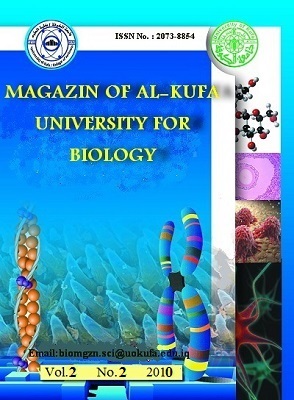Some bacteriological and clinical study of patients with vaginitis associated with intrauterine contraceptive device
Abstract
This study included (50) women suffering from vagintis associated with intrauterine contraceptive device admitted to Al-Hilla Teaching Hospital during the period from( June to August) 2008. Most patients presented with vaginitis and intrauterine contraceptive device. Age ranged between (15-50) years old.Vaginal swabs were taken from patients, all swabs were subjected to culture on available media and it was found that 20 samples revealed positive cultures, 18 pathogenic bacterial isolates most commonly Escherichia coli (6)followed by Staphylococcus aureus and Klebsiella pneumoniae(3) ,Proteus mirabilis(2) ,and two isolates for each Staphylococcs saprophyticus , Streptococcus agalagtiae and 2 yeast isolates where as 30 other swabs fail to give any growth. The effect of some antibiotics on pathogenic bacterial isolates assessed by disk diffusion ests shows that most of isolates were sensitive to ciprofloxacin and less than to a mikacinRegarding the ability of pathogenic bacteria to produce colonizing factors antigens, most of isolates produce first colonizing factors antigenCFA/I.S.aureus, P.mirabilis, Strep.agalagtiae ,S.saprophyticus, and three isolates of K.pnumoniae produce second colonizing factor CFA/II. While all of K.pnumoniae and Strep. agalagtiae isolates produce third colonizing factor antigen CFA/III. Two isolates of E.coli produce CFA/III. S.aureus, P.mirabilis and S.saprophyticus not produce CFA/III.
Downloads
Downloads
Published
How to Cite
Issue
Section
License
Copyright (c) 2013 Ban H. Alwash, Zaiton A. Kahawish, Ilham A. Bnyan, Raheek A. Kahawish

This work is licensed under a Creative Commons Attribution 4.0 International License.
which allows users to copy, create extracts, abstracts, and new works from the Article, alter and revise the Article, and make commercial use of the Article (including reuse and/or resale of the Article by commercial entities), provided the user gives appropriate credit (with a link to the formal publication through the relevant DOI), provides a link to the license, indicates if changes were made and the licensor is not represented as endorsing the use made of the work.












